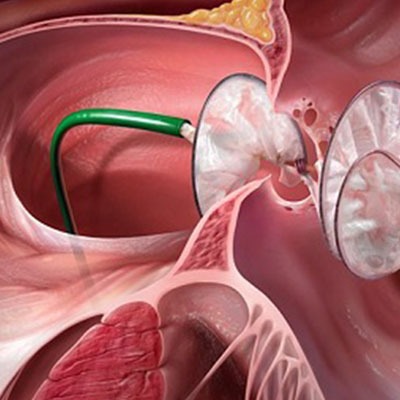ASD & PDA in Vijayawada

What Is Patent Ductus Arteriosus (PDA)?
Patent ductus arteriosus (PDA) is an extra blood vessel found in babies before birth and just after birth. In most babies who have an otherwise normal heart, the PDA will shrink and close on its own in the first few days of life. If it stays open for longer, it may cause extra blood to flow to the lungs. Problems are most likely if the PDA is large. Some smaller PDAs that don't close early will seal up on their own by the time the child is a year old.
What Happens in Patent Ductus Arteriosus?
The ductus arteriosus is a normal blood vessel that connects two major arteries the aorta and the pulmonary artery that carry blood away from the heart.
The lungs are not used while a fetus is in the womb because the baby gets oxygen directly from the mother's placenta. The ductus arteriosus carries blood away from the lungs and sends it directly to the body. When a newborn breathes and begins to use the lungs, the ductus is no longer needed and usually closes by itself during the first 2 days after birth.
If the ductus doesn't close, the result is a patent (meaning "open") ductus arteriosus. The PDA lets oxygen-rich blood (blood high in oxygen) from the aorta mix with oxygen-poor blood (blood low in oxygen) in the pulmonary artery. As a result, too much blood flows into the lungs, which puts a strain on the heart and increases blood pressure in the pulmonary arteries.
In infants born with other heart problems that decrease blood flow from the heart to the lungs or decrease the flow of oxygen-rich blood to the body, the PDA may actually help, and the doctor might prescribe medicine to keep the ductus arteriosus open.
What Causes Patent Ductus Arteriosus?
The cause of PDA is not known, but genetics might be a major problem. PDA is more common in premature babies and affects twice as many girls as boys. It's also common among babies with neonatal respiratory distress syndrome, babies with genetic disorders (such as Down syndrome), and babies whose mothers had rubella (also called German measles) during pregnancy.
What Are the Signs & Symptoms of Patent Ductus Arteriosus?
Babies with a large PDA might have symptoms such as:
- A bounding (strong and forceful) pulse.
- Fast breathing.
- Not feeding well.
- Shortness of breath.
- Sweating while feeding.
- Tiring very easily.
- Poor growth.
How Is Patent Ductus Arteriosus Diagnosed?
If a PDA is suspected, the doctor will use a stethoscope to listen for a heart murmur, which is often heard in babies with PDAs. Follow-up tests might include:
- A chest X-ray.
- An EKG, a test that measures the heart's electrical activity and can show if the heart is enlarged.
- An echocardiogram, a test that uses sound waves to diagnose heart problems. These waves bounce off parts of the heart, creating a picture of the heart. In babies with PDA, an echo shows how big the opening is and how well the heart is handling it.
- Blood tests.
Before a baby is born, the fetus's blood does not need to go to the lungs to get oxygenated. The ductus arteriosus is a hole that allows the blood to skip the circulation to the lungs. However, when the baby is born, the blood must receive oxygen in the lungs and this hole is supposed to close. If the ductus arteriosus is still open (or patent) the blood may skip this necessary step of circulation. The open hole is called the patent ductus arteriosus. Make an appointment with the best cardiologists in Vijayawada for psd heart treatment in Vijayawada.
How does it affect the heart?
Normally the heart's left side only pumps blood to the body, and the right side only pumps blood to the lungs. In a child with PDA, extra blood gets pumped from the body artery (aorta) into the lung (pulmonary) arteries. If the PDA is large, the extra blood being pumped into the lung arteries makes the heart and lungs work harder and the lungs can become congested.
How does the PDA affect my child?
If the PDA is small, it will not cause symptoms because the heart and lungs don't have to work harder. The only abnormal finding may be a distinctive type of murmur (noise heard with a stethoscope).
If the PDA is large, the child may breathe faster and harder than normal. Infants may have trouble feeding and growing at a normal rate. Symptoms may not occur until several weeks after birth. High pressure may occur in the blood vessels in the lungs because more blood than normal is being pumped there. Over time this may cause permanent damage to the lung blood vessels.
Get the asd heart treatmentat interventional cardiology hospital in Vijayawada.





